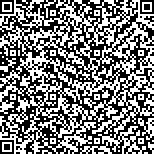| 李一帆,刘儒月,魏文剑.胃癌内镜筛查的卫生经济学评价[J].中国肿瘤,2022,31(3):169-176. |
| 胃癌内镜筛查的卫生经济学评价 |
| Health Economics Evaluation of Endoscopic Screening for Gastric Cancer |
| 投稿时间:2021-09-06 |
| DOI:10.11735/j.issn.1004-0242.2022.03.A002 |
|
 |
| 中文关键词: 胃癌 内镜筛查 卫生经济学 Markov模型 |
| 英文关键词:gastric cancer endoscopic screening health economics Markov model |
| 基金项目:国家自然科学基金(71904109);山东省自然科学基金(ZR2019PG006) |
|
| 摘要点击次数: 1320 |
| 全文下载次数: 362 |
| 中文摘要: |
| 摘 要:[目的] 构建胃癌早期筛查的Markov决策模型,从流行病学和卫生经济学的方面综合分析胃癌内镜筛查的有效性和经济价值,为进一步推进胃癌的早期筛查提供依据。[方法] 构建Markov决策模型,该模型包括4个Markov节点,分别代表4种策略,即未筛查、1年筛查1次、2年筛查1次、3年筛查1次。阅读和整理文献,提取出胃癌自然史模型所需概率、筛查成本以及医疗成本等数据。将数据代入模型,以1年为循环周期,通过多个周期循环,预测40~75岁人群内镜筛查的流行病学和卫生经济学结果。[结果] 成本效果分析显示,相较于未筛查组,3个筛查组每挽救1个生命年(life year,LY)的增量成本分别为3 064.71元(每年1次)、2 161.94元(2年1次)、2 265.26元(3年1次)。成本效用分析显示,相较于未筛查组,3个筛查组每增加1个质量调整生命年(quality-adjusted life years,QALY)的增量成本分别为3 131.09元(每年1次)、2 057.39元(2年1次)、2 293.18元(3年1次)。相较于未筛查组,每年1次的内镜筛查方案具有较好的经济价值。[结论] 根据世界卫生组织对于伤残调整生命年的推荐意见,1年1次、2年1次、3年1次的内镜筛查方案与支付意愿阈值相比较,研究人群均可接受增加的成本。每年筛查1次产生的效果最佳,为首选策略。 |
| 英文摘要: |
| Abstract:[Purpose] To evaluate the cost-effectiveness of endoscopic screening for gastric cancer based on Markov decision-making model. [Methods] A Markov decision-making model was gene-rated, which included 4 nodes representing unscreened, screened once a year, screened once every two years, screened once every three years. The data of natural history of gastric cancer, screening costs and treatment costs were extracted from the literature, and incorporated into the Markov model. In the model one-year cycle was used and through multiple cycle, the epidemiology and health economics results of screening in a population of 40~75 years old were estimated. [Results] The cost-effectiveness analysis showed that compared with the unscreened group, the incremental cost-effect ratios(ICER) were 3 064.71 Yuan/LY, 2 161.94 Yuan/LY and 2 265.26 Yuan/LY for screened once a year, once every two years, once every three years, respectively. The cost-utility analysis showed that compared with the unscreened group, the incremental cost-utility ratios(ICUR) were 3 131.09 Yuan/QALY, 2 057.39 Yuan/QALY, 2 293.18 Yuan/QALY for screened once a year, once every two years, once every three years, respectively. [Conclusion] The study shows that annual endoscopic screening of gastric cancer has the best cost-effectiveness for population of 40~75 years old. |
|
在线阅读
查看全文 查看/发表评论 下载PDF阅读器 |